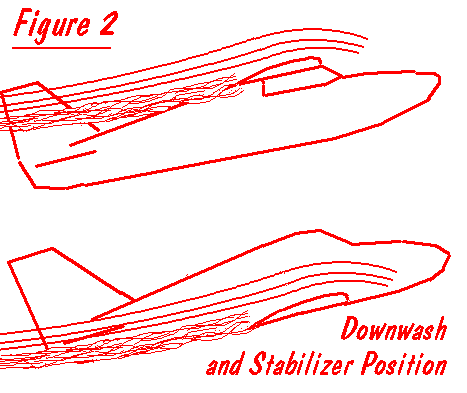
HIGH WINGS versus LOW WINGS
-by Clay Ramskill
We finally master our high wing trainer -- or trash it, whichever comes first. Maybe then we build a shoulder wing plane.
Only after we are somewhat competant at flying do we try flying a low wing plane, and then with white knuckles and shaky knees. WHY? Just what is it about low wingers that make them "tougher" to fly?
Are they faster? No! All other things being equal, there's virtually no difference in drag, or therefore top speed. The illusion comes from designers' choice -- they tend to put faster airfoil sections and lower aspect ratios on low wing planes, making them speedier.
Low wing planes do have several characteristics, compared to high wingers that make them more suitable for higher performance aircraft.
1. "Nicer" (and quicker) roll response. This comes from the relative placement of the Center of Gravity, being closer to the natural roll center of the wing. The CG will be at or only slightly above the roll center of a low wing, but well below that of a high wing. Assuming at least a little dihedral, the roll center of the wing will be slightly above the center of the wing. See figure 1.

In a roll, the wing (providing the "power") wants to roll about its own roll center. The rest of the plane (the "resistance") wants to roll about the CG. The wider the distance between roll center and CG, the funnier-looking is the roll (i.e., "non-axial").
2. The low wing lends itself to a less stable stabilizer position, leading to more pitch maneuverability.
With a high wing, it's simple, and natural, to have the stabilizer well below the wing. When the nose is pulled up, the stab drops down well below the wing's downwash, and becomes increasingly resistant to further AOA increases. This is great for stability, and makes stalls less likely.
The opposite is true for the low winger -- or a pull-up, the higher stab drops into the wing's downwash, making further AOA increases easier, and the plane more maneuverable.

3. The low wing reacts more neutrally to power changes.
Our old high wing trainer, with the thrust line very low, will respond by pitching nose up when power is added, nose down if power is reduced. This contributes to stability, with the nose going the way we want it to on a trainer.
On the other hand, the low winger will be more neutrally stable, without much pitch reaction to power changes.
The low winger will also be more wind "resistant" on the ground, a function of wing height above the wheels. The high winger will naturally be more "tipsy," reacting to wind while taxiing and during takeoff and landing.
We must all understand that we're only talking of tendencies here. There are many other variables that have an impact on the characteristics involved -- the designer can juggle these around to get the desired handling. But wing placement is definitely one of the biggies when it comes to establishing how a plane is going to handle.
Site maintained by QSoftWorks
Last Update: 10/12/97